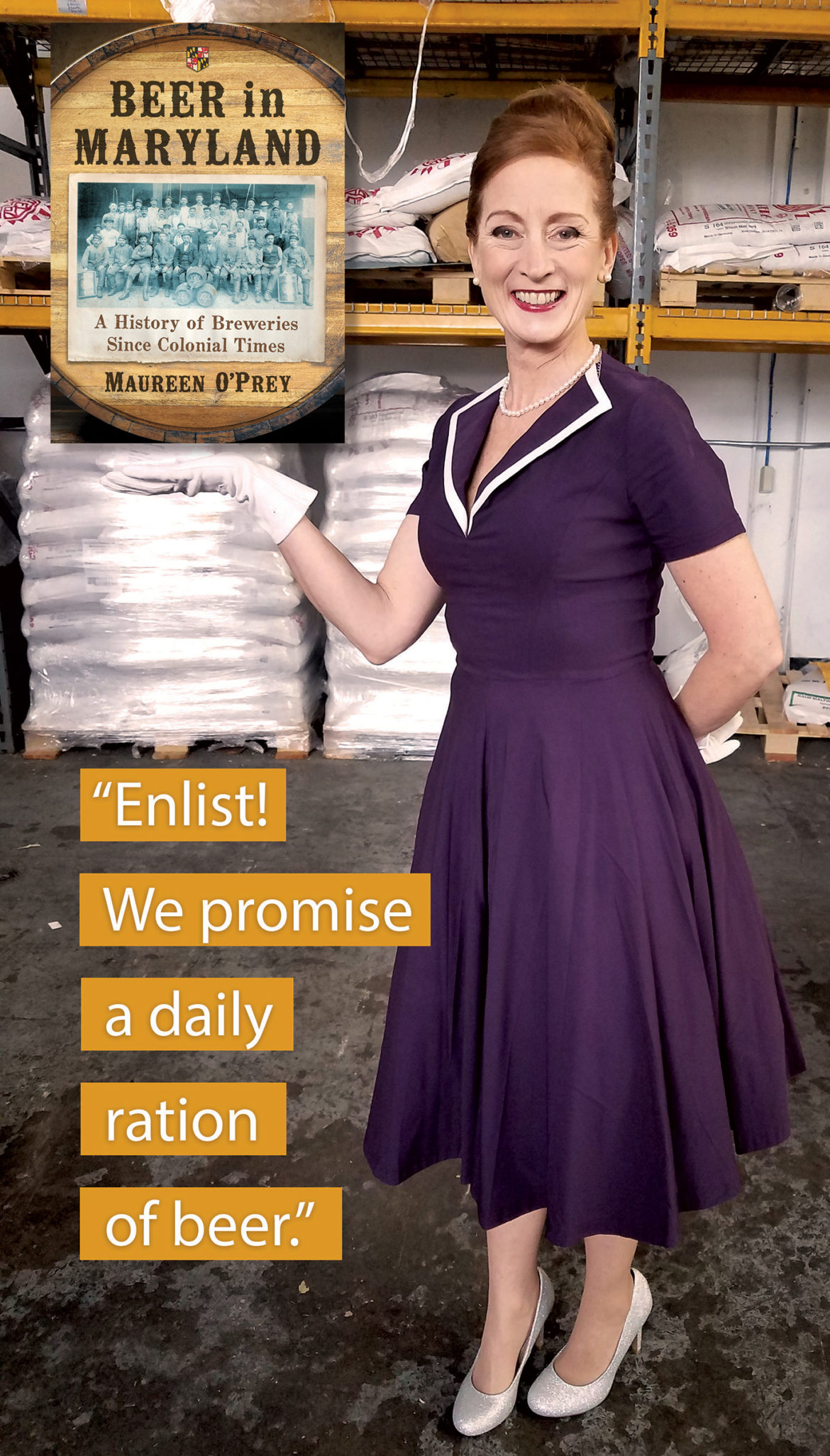BY KATE MASTERS
Beer lover and historian Maureen O’Prey was inspired to delve into Maryland’s brewing history after a visit to Dublin’s Guinness factory.
Her research soon became an obsession. O’Prey has written two books on the subject: “Brewing in Baltimore” and “Beer in Maryland.” She appeared in the film “Brewmore Baltimore,” an Emmy-award winning documentary on local brewing history.
Given her expertise in all things beer, UnCapped asked O’Prey to tell us more about the history of the drink in Maryland.
How did brewing begin in Maryland?
So, initially, brewing wasn’t a commercial thing in the Colonies. It was something women did as far as taking care of the family and the home. So, we would literally brew just like we would make dinner, keep the hearth, take care of the garden, take care of the children. It was women’s work. When we start to see commercial breweries, the first one is going to be in Annapolis, and that’s Benjamin Fordham in 1703. But until the Revolutionary War, most of them are not going to be successful because everyone was brewing.
When did commercial breweries really take off in Maryland?
We get the commercial breweries because of the Revolutionary War. One of the most fascinating things to me is that’s how they got men to sign up for war. It was like, “Enlist! We promise a daily ration of beer.”
The first really successful brewery we’re going to see in Maryland is the Barnitz brewery in Baltimore. John Leonard Barnitz, he was an immigrant from Falkenstein, Germany. Many of our brewers are going to be immigrants. And the majority in Maryland are going to come from Germany.
What was that early beer like?
Well, when you think of Colonial Maryland, it’s really expensive to import malts and hops from England. Eventually, the colonists figure out that the grains in the region are really good for malting, and they make substitutes. Spruce beer is the perfect example.
They would use spruce instead of hops, and what that would do is it would still give them that acidic kind of bitter flavor that you’d expect from hops, but it would also kind of smooth it out. I can point you to cookbooks from colonial women in Maryland with five separate recipes with substitutions for hops. Some would write up recipes for malting Indian corn because they couldn’t get ahold of the malting grains they would standardly use. And that came from women who were figuring out how to use the substitutions before commercial breweries were really active.
How were those women pushed out of commercial
brewing?
The moment that we need to gear up and start supplying our troops for the Revolutionary War, that’s when we see the rise of commercial breweries. And that is something that’s going to be left in the hands of men.
Women brewers are going to be smaller and smaller in number post-Revolutionary War because of the fact that it’s managing a business. And that [was] something that fell to men.
Women are entering the industry again.
I am darn glad …. Most people tend to think that started in the ’80s. But I would actually argue it started before that. When you look at Maryland, and the Gunther Brewing Company in Baltimore post-Prohibition, they did a multimillion dollar renovation on their brewery in the 1950s. And one of the things they made sure they did in the brewery was have quarters for women, because there were so many working in the brewery.

